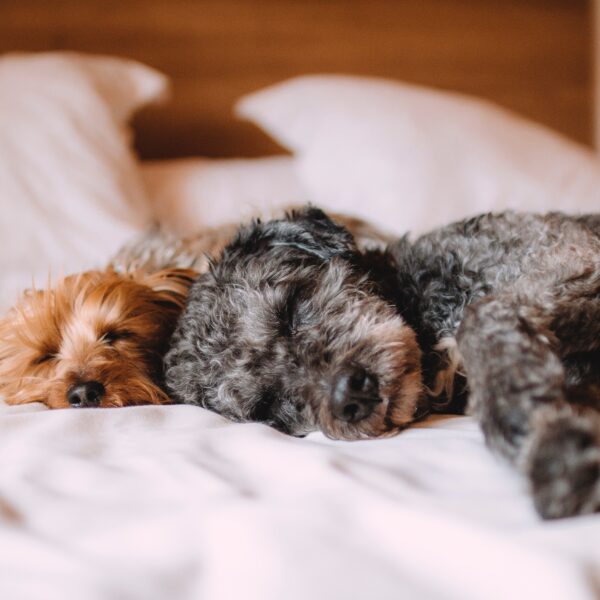Keeping pets cool in the summer helps to prevent heat exhaustion, heatstroke, dehydration and burnt paws. It can be really dangerous if your dog gets too hot and, as with most things in life, prevention is better than cure. Team Vital Pet Club have put together our top tips for keeping your dog cool, plus what to do if you’re worried your pet has overheated. So you and your doggo can enjoy your summer to the max. 😎
Dog summer safety tips for keeping your dog cool:
❗ Keep your pet in the shade, or indoors in a cool room. Consider a fan as long as this doesn’t bother your pooch.
💦 Make sure they have access to cool water at all times
🐾 Walk early morning or late evening when it isn’t as hot
🖐 Test the ground with your hand – you should be able to hold it there for ten seconds
🐶 Apply pet safe sun cream to pale, exposed skin
❄Consider pet cooling products, such as a dog mat. Just remember these can eventually warm up if your pet lies on them for too long at once!
🚗 DO NOT leave your pet in the car on a sunny day (whatever the air temperature)
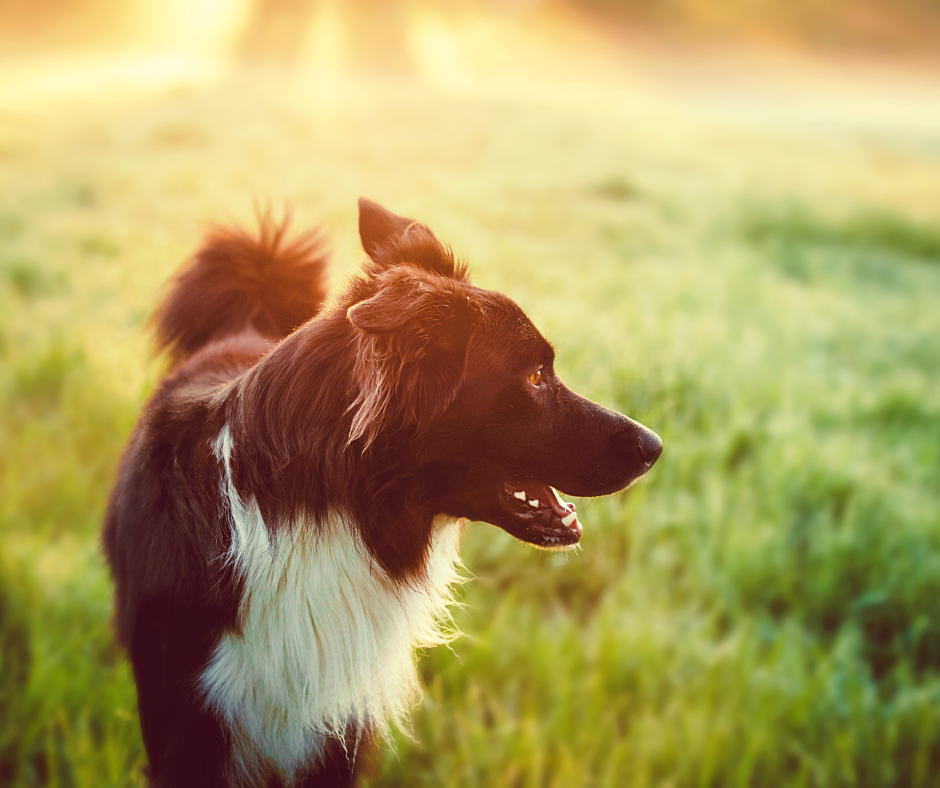
Dog heatstroke
Keeping pets cool in hot weather is really important to help avoid heat exhaustion or even heatstroke. Heat exhaustion is less severe than heatstroke and you might notice excessive panting and thirst. This often resolves within about half an hour of getting your doggo out of the heat and they are unlikely to need veterinary care as long as they recover quickly and do not show other symptoms. However, heat exhaustion can progress to heatstroke if not caught early enough.
A common cause of heatstroke in dogs is being left in a car on a hot or sunny day. Even if the outside air temperature is fairly cool, the car can rapidly heat up in the sunshine as the glass windows trap in the sun’s rays just like a greenhouse. Even a few minutes of this can be very dangerous. Exercising when it is too toasty or being outside in the sunshine without shade or enough to drink are also problematic. However, a pet can develop heatstroke even if they are indoors, simply by getting too hot.
Certain breeds can be more prone, including brachycephalics like pugs, boxers and bulldog breeds. Thick-coated breeds, older pets and anxious or excitable pooches can also be at greater risk.
What are the signs of dog heatstroke?
The first signs of your dog overheating are usually panting and thirst (heat exhaustion) progressing to some or all of the following: drooling, lethargy, restlessness, apparent dizziness or confusion, nausea, loss of appetite, vomiting and diarrhoea, and difficulty breathing. More serious cases can lead to seizures or even collapse.
If your pet is only showing signs of heat exhaustion (panting and thirst) move them into a cool shady space with access to a water bowl. You could also get a fan going, although not too close to your dog as the noise and strong airflow could bother them. Do not lay a wet towel over your dog because this will warm up and prevent the cooling effect of the evaporation. Wetting your dog’s fur with cool (but NOT ice cold) water may help but should be stopped if it upsets your pet as their breathing could be affected if they become stressed.
However, heatstroke is not treatable at home and requires veterinary care. Therefore, if your pet is showing signs of heatstroke, you should move your pet somewhere cooler, with access to water, and then contact a vet immediately.
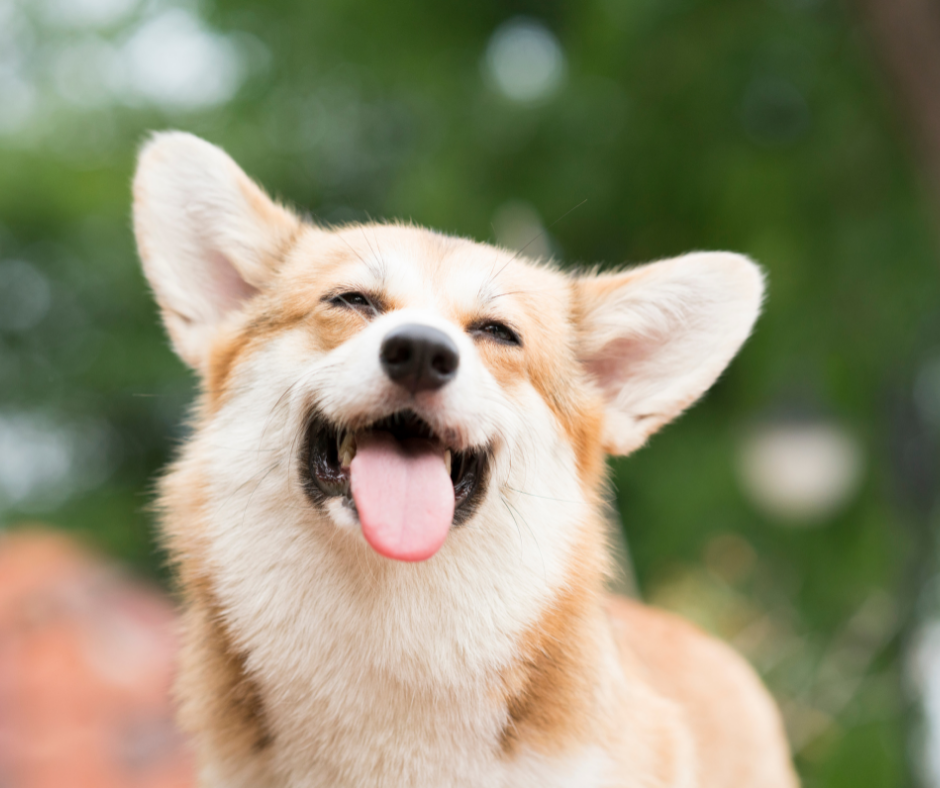
Why do dogs pant when hot?
Unlike us hoomins, dogs can only sweat from their paw pads and not anywhere else on their bodies. This means that panting is important to try and regulate their body temperature. Keep in mind that panting can also be a sign of stress or anxiety too, so try to keep them calm and relaxed to avoid making the panting worse.
Dog dehydration
In the warmer weather, your dog will probably need to take on more liquid and their water bowl will need more regular refills. Normal levels of water intake vary a lot depending on your pet’s diet and activity levels, but most dogs require anywhere between 20-70ml of water per kg bodyweight, each day.
If you’re concerned that your pet has become a bit dehydrated in the heat, but is otherwise bright and well, you can try our tips below to encourage them to take on more fluid. However, if your pet is showing physical signs of dehydration or heatstroke, you should seek veterinary advice.
Oral rehydration fluids can be a handy option, but you should only ever give products that are designed for dogs. This is because human products can contain ingredients which are harmful to pets, such as sweeteners. Doggy varieties are often meaty flavoured – yum! It is best not to try and force your pet to drink or use a syringe, unless under veterinary advice, because this can make your pet head shy and cause problems with medicating down the line.
Ensure your pup always has access to drinking water. You can place a few spare water bowls around the house, particularly if you have several pets as not all fur-siblings are happy sharing. You might even find that your doggo is a fan of a water-fountain rather than a regular bowl.
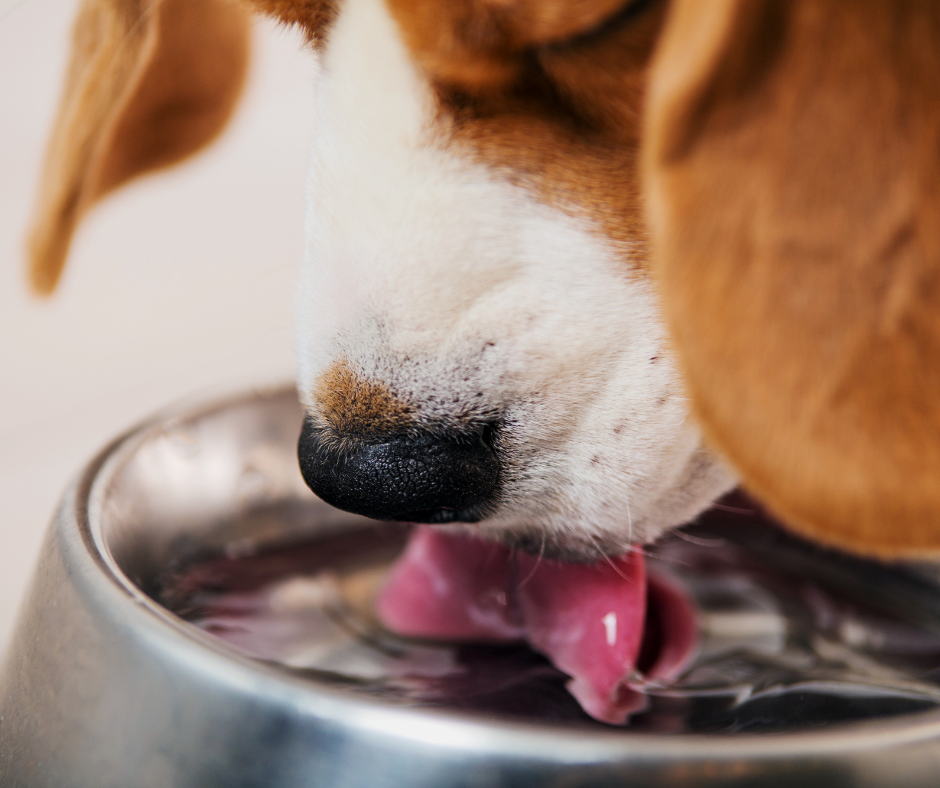
How can you tell if your dog is dehydrated?
The first sign you might notice is increased levels of panting, or tacky gums if you happen to check those. If your pet is otherwise well, try our tips above. However, if they do not improve or show any of the following signs, it’s time to get veterinary advice:
- Lack of appetite
- Sunken eyes
- Lethargy
- Weakness
- Loss of skin elasticity
- Collapse
Dog paw burns
Ever walked barefoot on the beach in the summer? The sand can get hot, hot, hot! This is also true of other surfaces, like artificial grasses, roads and pavements. Concrete, asphalt or tarmac absorb a lot of heat from the sun’s rays and can feel extremely hot even once the air temperatures have dropped later in the day.
Although the skin on your pooch’s pads is thicker than elsewhere on their body, it can burn when in contact with hot ground. This means it is best to walk your dog early in the morning, before the ground gets too hot for a dog walk. The ’10 second test’ of placing your own hand on the ground and seeing whether you can tolerate leaving it there is a useful indicator, but if in doubt don’t walk your pet. Walking on natural grassy areas on hot days is better as these tend to be cooler.
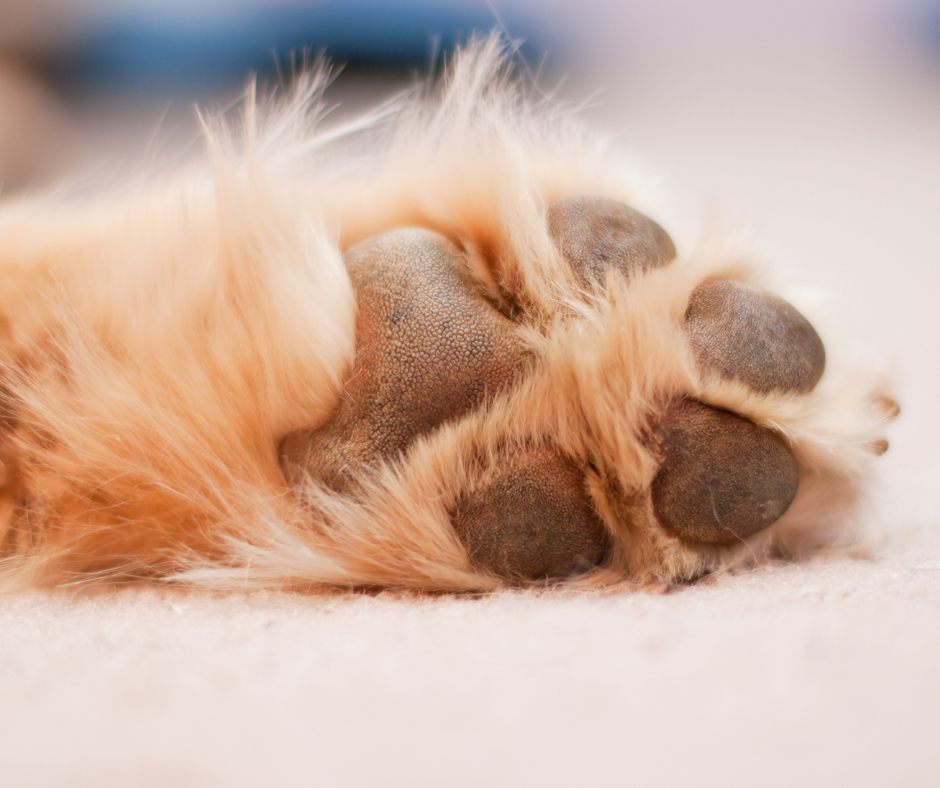
Spotting burnt paws
Depending on how bad the burn is, and how stoic your doggo, your pet may just seem a little uncomfortable when walking or they could show signs of a full-on limp. If your pet is licking at their paws, this can be a sign that they are feeling sore. Sometimes the skin colouration will appear different and there can even be blisters.
First aid for mild burns may be possible at home, but you should speak to a vet if this does not resolve your pet’s symptoms or if you notice blistering, broken skin or reddening. The vet will also look for other causes of your pet’s discomfort including grass seeds, broken claws and pad injuries. The vet may prescribe pain meds to your pet, and all advice should be followed to help stop the pads from developing an infection.
First aid for burnt paws
For mild burns you can try home treatment first, but be aware that many dogs are not a fan of having their feet checked, and don’t put yourself at risk of getting a nip. Avoid further damage to your pet’s paws and try to stop your pet from licking their feet which can increase their risk of infection. Wrap an ice pack in a clean towel and apply this to the affect paw pads. An alternative is to use cold, running water from a hose (but NOT a power hose) or a tap. This should be on a low setting as strong jets will be sore. You should see an improvement after 15 minutes, otherwise contact a vet for advice.
Why not chat to your local pet shop to see if they have any extra tips or products for keeping your dog cool? Plus, follow us on Facebook and Instagram for pet advice updates.


